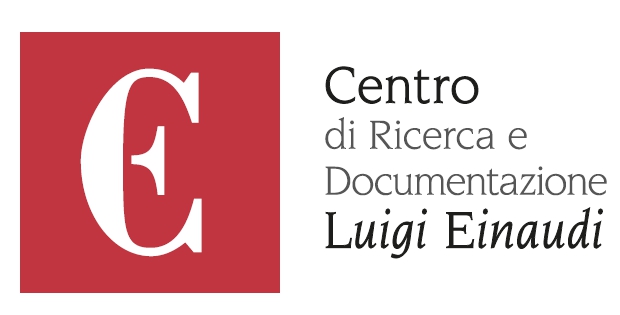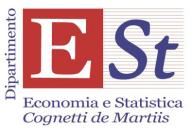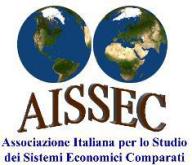by Michele Boario, UNIDO
After 50 years of brutal military dictatorship and stagnation, in 2011 Myanmar started an astonishing reform process which triggered a triple transaction in politics, economics and peace process. FDIs flocked into the country and according to the IMF World Economic Outlook of April 2016, Myanmar become the world’s fastest-growing economy with an 8.6% projected real GDP growth. Despite a recent significant economic slowdown, the IMF considers the country as an emerging market, and many observers continue looking at it as the Asia’s final frontier. Should we conclude that Myanmar is an emerging economy? The answer depends on how an emerging economy is defined.
The analysis started taking into consideration the following variables: the geopolitical context, the level of openness, leadership and good governance, as well as the market orientation, the macroeconomic stability, the future orientation, and the risk of conflict.
In recent years the soft rivalry between the USA and China in South East Asia combined with a Myanmar non-aligned foreign strategy created a favorable geopolitical context for sustained growth. The American engagement has propped up the reform process, encouraged the best intentions of the Army in favour of a "disciplined democracy", and boosted foreign investments from its allies. China has revised its Myanmar policy toward a more "win-win" and people-friendly direction. It is difficult to predict how the American foreign policy in the Region will change under the Trump administration, but most observers do not expect a dramatic shift and the geopolitical context for Myanmar is expected to remain favorable.
The country carried out a number of market oriented reforms and is opening up quickly. Myanmar has taken important steps toward creating an environment conducive to private investment. The government has unified the exchange rate and liberalized the foreign exchange market, and passed a new advanced Investment Law. It has also introduced an open tender system for public procurement, opened the financial sector to foreign banks, and enacted a Special Economic Zone Law that will help investors to overcome infrastructure bottlenecks. These reforms have contributed to a surge in foreign direct investment (FDI), particularly in telecommunications, and oil and gas. A significant transfer of know-how already started, yet much more is needed to integrate the economy in the regional and global value chains.
The new Myanmar Government led by Aung San Suu Kyi and her National League for Democracy (NLD) is committed to an equitable development, but most of the institutions and the public administration are very weak and the pace of the reform process is slowing down.
The GDP growth is still strong (around 6.5% in 2016), but macroeconomic imbalances persist, with continuing inflation pressure (10%), an increased fiscal deficit, and a widening external current account deficit (6.5% of GDP). On a positive note, the country looks firmly future oriented with a rising level of savings and investment (gross national savings as % GDP over 15% and total investment as share of GDP over 20% in 2016). As expected the overall picture is mixed, and a better understanding has been seek through a comparative analysis with Vietnam and Thailand which are considered as two clear examples of emerging economies in the region. Success factors and weakness in both countries are interesting lessons to be learnt for Myanmar and point at what is still missing in the golden land to be considered as an emerging economy.
After a decade of unsuccessful command economy, in 1986 Vietnam started the “Doi Moi” a “renovation” based on reforms to stabilize and open the economy, and trade agreements, which resulted in strong economic growth, export and investment boom, and dramatic human development improvement. Success factors are: pragmatic leadership and effective policy making cycle; strong institutions and broad foundation for infrastructure; equitable initial investment in human development; successful combination of internal and external resources; land and agriculture sector reforms; pragmatic and sequenced trade liberalization; continued investment in human development; social solidarity and equity in policy and implementation; future orientation; political stability; and a pragmatic leadership based on trial and error methodology, consensus based decisions, and political support to implement policies. As of 2017 the “renovation” seems losing momentum, some of the possible reasons are: limited technological spillovers from FDIs, limited productivity improvement, failure in providing medium and high skills, and growing inequality.
On the south-eastern border of Myanmar, Thailand has undergone major industrial and social transformation amid rapid economic growth and development for over half a century. It is now the second largest economy with the 4th highest income per capita in the Association of Southeast Asian Nations. It has successfully shifted its economy from agriculture to export-oriented manufacturing, while integrating key production, particularly automobiles and electronics, into regional value chains. It has also been quite successful in attracting foreign direct investment, particularly in export-oriented sectors. The key factors behind this success story are: dynamic entrepreneurs and supportive state (business oriented), political and macroeconomic stability, openness, export orientation and FDIs, future orientation, very high labor force participation of women. The miracle ended in 1997, the country is currently facing a middle income trap, with some clear weaknesses: aging population, not enough investment in secondary education and research, high inequality, and pollution.
Taking into consideration the time series of key variables for economic emergence, such as the GDP per-capita, FDIs, exports, savings and investment, and human development index, Myanmar seems on the right path to follow the success stories of Thailand and Vietnam. However, Myanmar is still facing a number of daunting political challenges, including the reform of the constitution, the relationship between the ruling party, the Army and the oligarchs, the lack of local representation in the regional governments, and above all the difficult process for NLD to move from opposition movement to ruling majority without any previous government experience. The peace process is not improving, many ethnic armed groups are still fighting with the Army and the international criticism on the treatment of Muslim minorities is growing. The risk of a major civil war or a new coup is still there, not only due to a constitutional clause giving the Army the prerogative to declare the state of emergency and get back power at any time, but also because a number of conflict risk factors still characterize Myanmar: low income, primary commodity export, the coexistence of one large ethnic group and a multitude of smaller ones, previous coups and civil wars.
In conclusion, despite its huge economic potential, to the extent that irreversibility of growth and improvement of living conditions are part of the definition, the presence in Myanmar of a conflict trap, compounded with a poverty trap and a resource trap, for the time being, make it problematic to include the country into the group of the emerging economies.
After 50 years of brutal military dictatorship and stagnation, in 2011 Myanmar started an astonishing reform process which triggered a triple transaction in politics, economics and peace process. FDIs flocked into the country and according to the IMF World Economic Outlook of April 2016, Myanmar become the world’s fastest-growing economy with an 8.6% projected real GDP growth. Despite a recent significant economic slowdown, the IMF considers the country as an emerging market, and many observers continue looking at it as the Asia’s final frontier. Should we conclude that Myanmar is an emerging economy? The answer depends on how an emerging economy is defined.
The analysis started taking into consideration the following variables: the geopolitical context, the level of openness, leadership and good governance, as well as the market orientation, the macroeconomic stability, the future orientation, and the risk of conflict.
In recent years the soft rivalry between the USA and China in South East Asia combined with a Myanmar non-aligned foreign strategy created a favorable geopolitical context for sustained growth. The American engagement has propped up the reform process, encouraged the best intentions of the Army in favour of a "disciplined democracy", and boosted foreign investments from its allies. China has revised its Myanmar policy toward a more "win-win" and people-friendly direction. It is difficult to predict how the American foreign policy in the Region will change under the Trump administration, but most observers do not expect a dramatic shift and the geopolitical context for Myanmar is expected to remain favorable.
The country carried out a number of market oriented reforms and is opening up quickly. Myanmar has taken important steps toward creating an environment conducive to private investment. The government has unified the exchange rate and liberalized the foreign exchange market, and passed a new advanced Investment Law. It has also introduced an open tender system for public procurement, opened the financial sector to foreign banks, and enacted a Special Economic Zone Law that will help investors to overcome infrastructure bottlenecks. These reforms have contributed to a surge in foreign direct investment (FDI), particularly in telecommunications, and oil and gas. A significant transfer of know-how already started, yet much more is needed to integrate the economy in the regional and global value chains.
The new Myanmar Government led by Aung San Suu Kyi and her National League for Democracy (NLD) is committed to an equitable development, but most of the institutions and the public administration are very weak and the pace of the reform process is slowing down.
The GDP growth is still strong (around 6.5% in 2016), but macroeconomic imbalances persist, with continuing inflation pressure (10%), an increased fiscal deficit, and a widening external current account deficit (6.5% of GDP). On a positive note, the country looks firmly future oriented with a rising level of savings and investment (gross national savings as % GDP over 15% and total investment as share of GDP over 20% in 2016). As expected the overall picture is mixed, and a better understanding has been seek through a comparative analysis with Vietnam and Thailand which are considered as two clear examples of emerging economies in the region. Success factors and weakness in both countries are interesting lessons to be learnt for Myanmar and point at what is still missing in the golden land to be considered as an emerging economy.
After a decade of unsuccessful command economy, in 1986 Vietnam started the “Doi Moi” a “renovation” based on reforms to stabilize and open the economy, and trade agreements, which resulted in strong economic growth, export and investment boom, and dramatic human development improvement. Success factors are: pragmatic leadership and effective policy making cycle; strong institutions and broad foundation for infrastructure; equitable initial investment in human development; successful combination of internal and external resources; land and agriculture sector reforms; pragmatic and sequenced trade liberalization; continued investment in human development; social solidarity and equity in policy and implementation; future orientation; political stability; and a pragmatic leadership based on trial and error methodology, consensus based decisions, and political support to implement policies. As of 2017 the “renovation” seems losing momentum, some of the possible reasons are: limited technological spillovers from FDIs, limited productivity improvement, failure in providing medium and high skills, and growing inequality.
On the south-eastern border of Myanmar, Thailand has undergone major industrial and social transformation amid rapid economic growth and development for over half a century. It is now the second largest economy with the 4th highest income per capita in the Association of Southeast Asian Nations. It has successfully shifted its economy from agriculture to export-oriented manufacturing, while integrating key production, particularly automobiles and electronics, into regional value chains. It has also been quite successful in attracting foreign direct investment, particularly in export-oriented sectors. The key factors behind this success story are: dynamic entrepreneurs and supportive state (business oriented), political and macroeconomic stability, openness, export orientation and FDIs, future orientation, very high labor force participation of women. The miracle ended in 1997, the country is currently facing a middle income trap, with some clear weaknesses: aging population, not enough investment in secondary education and research, high inequality, and pollution.
Taking into consideration the time series of key variables for economic emergence, such as the GDP per-capita, FDIs, exports, savings and investment, and human development index, Myanmar seems on the right path to follow the success stories of Thailand and Vietnam. However, Myanmar is still facing a number of daunting political challenges, including the reform of the constitution, the relationship between the ruling party, the Army and the oligarchs, the lack of local representation in the regional governments, and above all the difficult process for NLD to move from opposition movement to ruling majority without any previous government experience. The peace process is not improving, many ethnic armed groups are still fighting with the Army and the international criticism on the treatment of Muslim minorities is growing. The risk of a major civil war or a new coup is still there, not only due to a constitutional clause giving the Army the prerogative to declare the state of emergency and get back power at any time, but also because a number of conflict risk factors still characterize Myanmar: low income, primary commodity export, the coexistence of one large ethnic group and a multitude of smaller ones, previous coups and civil wars.
In conclusion, despite its huge economic potential, to the extent that irreversibility of growth and improvement of living conditions are part of the definition, the presence in Myanmar of a conflict trap, compounded with a poverty trap and a resource trap, for the time being, make it problematic to include the country into the group of the emerging economies.









